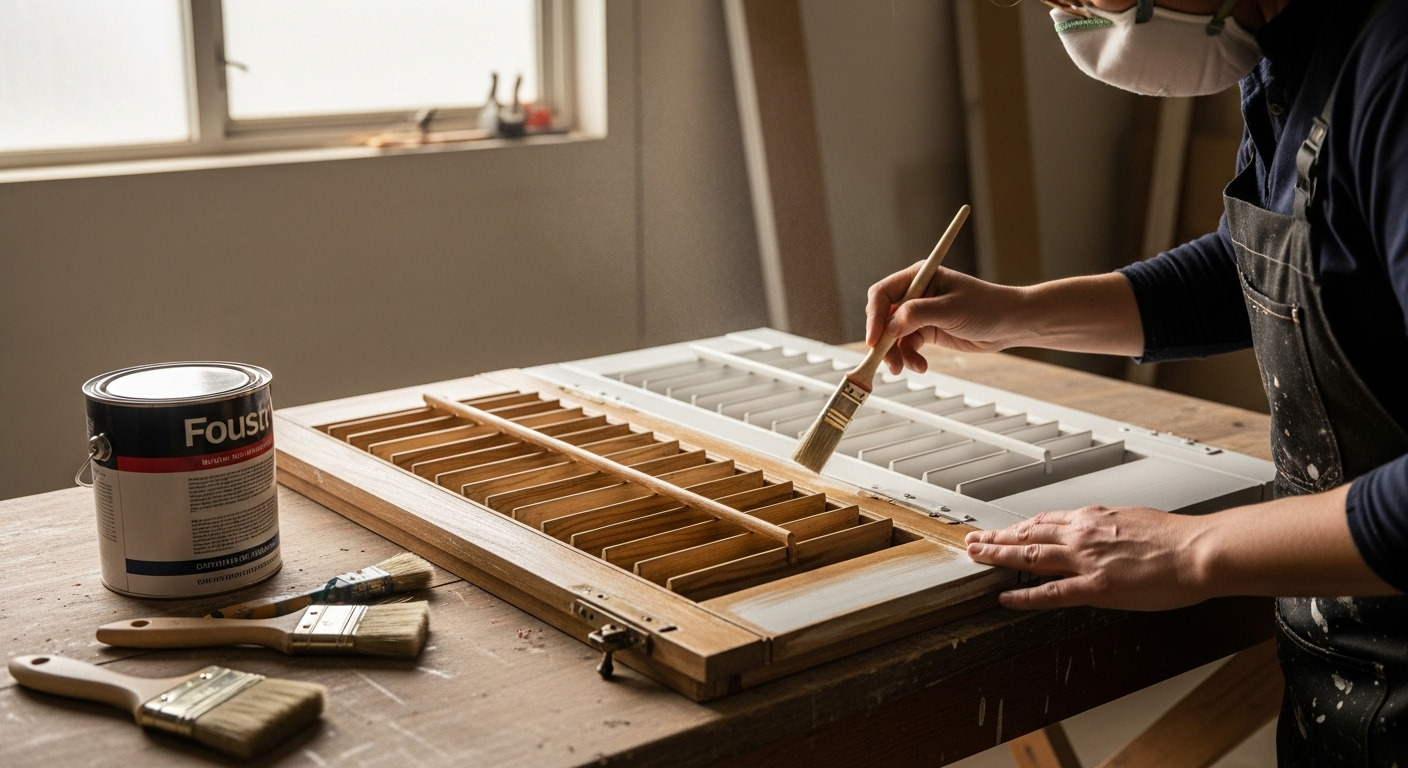Shutter Painting and Refinishing: What You Need to Know

Thinking about painting your plantation shutters to freshen them up or match new decor? Here's everything you need to know about painting and refinishing shutters successfully.
Can Plantation Shutters Be Painted?
Short answer: Yes, but it's more complex than painting a wall.
Long answer: Success depends on material, current finish, and proper preparation. Some shutters paint beautifully; others are nearly impossible to paint well.
Best Candidates for Painting
Wood Shutters
Paintability: Excellent Best approach: Professional spray painting for smooth factory finish DIY difficulty: High (brush marks show easily) Expected result: Can look factory-new with proper prep
Composite Shutters
Paintability: Good to Fair Best approach: Light sanding, primer, spray paint DIY difficulty: Very High (finish adheres poorly without proper prep) Expected result: Acceptable with professional application
Vinyl Shutters
Paintability: Poor Best approach: Specialized vinyl paint only DIY difficulty: Extremely High Expected result: Often disappointing; paint chips within 1-2 years
When NOT to Paint
Skip painting if:
- Shutters are severely warped (paint won't fix structural issues)
- Extensive water damage present (painting covers but doesn't solve)
- Frame is rotting (needs replacement, not paint)
- Current finish is peeling due to moisture (problem will return)
The Professional Painting Process
Step 1: Removal and Disassembly
Remove shutters from windows, remove all hardware, separate panels if needed
Step 2: Deep Cleaning
Remove all dust, grease, and grime that prevent paint adhesion
Step 3: Sanding
Light sanding to roughen surface and remove old finish inconsistencies
Step 4: Priming
Oil-based primer for wood; specialized primer for composite/vinyl
Step 5: Painting
Multiple thin coats of high-quality paint, allowing proper drying between coats
Step 6: Reassembly and Reinstallation
Reinstall hardware, hang shutters, ensure proper operation
DIY Painting: Honest Assessment
Challenges you'll face:
- Getting into all louver angles
- Avoiding brush marks and drips
- Achieving consistent color
- Preventing paint from gumming up moving parts
- Matching factory-smooth finish
Time investment:
- Small window (4 panels): 8-12 hours
- Medium window (6 panels): 12-16 hours
- Per window costs add up quickly
Common DIY mistakes:
- Painting shutters while installed (paint drips, louvers stick)
- Using wrong paint type (poor adhesion, yellowing)
- Insufficient sanding (paint peels within months)
- Too-thick coats (gummy louvers that won't tilt)
Cost Comparison
Professional painting per window:
- Basic: $200-350
- Complex/large: $350-500
- Includes removal, prep, paint, reinstall
DIY costs per window:
- Paint/primer: $40-60
- Sandpaper/supplies: $20-30
- Time: 8-16 hours
- Risk of poor result: High
New shutters:
- Per window: $300-800
- Includes new hardware, warranty
- 20+ year lifespan
Refinishing vs. Painting
Refinishing (removing old finish, applying new stain):
- Only for real wood shutters
- Expensive but beautiful results
- Shows wood grain
- Cost: $300-500 per window
Painting (covering with opaque color):
- Works on wood and composite
- More affordable
- Hides imperfections
- Cost: $200-350 per window
Color Considerations for Houston Homes
Best shutter colors for Houston climate:
- White (reflects heat, stays cooler)
- Off-white/cream (hides dust better than pure white)
- Light gray (modern, heat-reflective)
Avoid these in Houston:
- Dark colors (absorb heat, warp faster)
- Black (extreme heat buildup)
- Bold colors (limit resale appeal)
When Replacement is Better Than Painting
Choose replacement over painting if:
- Shutters are 15+ years old and showing wear
- Multiple mechanical issues (not just cosmetic)
- You want to change style or upgrade material
- Painting cost approaches 70% of replacement cost
Our Recommendation
We're honest: sometimes painting isn't worth it. Before investing in painting:
- Assess structural condition
- Calculate cost vs. replacement
- Consider lifespan after painting (5-8 years typical)
- Factor in your time or professional costs
Need honest advice on paint vs. repair vs. replace? Call (281) 441-7998 for free assessment.